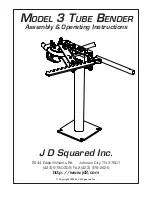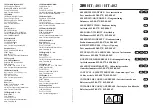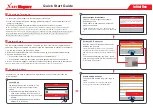
RTC
®
5 PC Interface Board
Rev. 1.9 e
12 Troubleshooting
568
innovators for industry
Additionally, the following commands can be helpful
for troubleshooting:
and
, nearly any
command can be checked for proper execution
(see
chapter 6.8 "Error Handling", page 87
).
, you can verify that all
downloads (commands, tables) were performed
error-free (see
section "Download Verification" on
, you can query
specific values returned from the scan-system.
With
, you can record an entire series of
returned values (see
DRIVE
®
scan
systems also see
).
check if program branches (conditional jumps)
executed as intended.
, you can check if overruns of
the 10
µ
s clock period occurred (see
).
, you can
determine which command number the program
is currently executing (e.g. for “infinite loops“ due
to a circular argument in the program flow).
•
provides information about
the laser signals and possible transmission errors
to and from the attached scan system.
If specific outputs from a port have no effect, then
check if the user application is performing directly
consecutive accesses of that same port. Because so-
called short list commands (see
) are typi-
cally used for this, one command might overwrite the
other’s output value within the same 10
µ
s clock
period. In this situation, separate both short
commands with a (normal) list command, e.g.
or
If the execution time (measured via
correspond with your calculation, check if your appli-
cation contains so-called short list commands, which
generally don’t require their own clock period for
execution. Another possibility is that additional
scanner delays were automatically inserted to
prevent (improper) overlap of LaserOn and LaserOff
(see
section "Automatic Delay Adjustments" on
).
If the problems persist, please contact SCANLAB.
















































